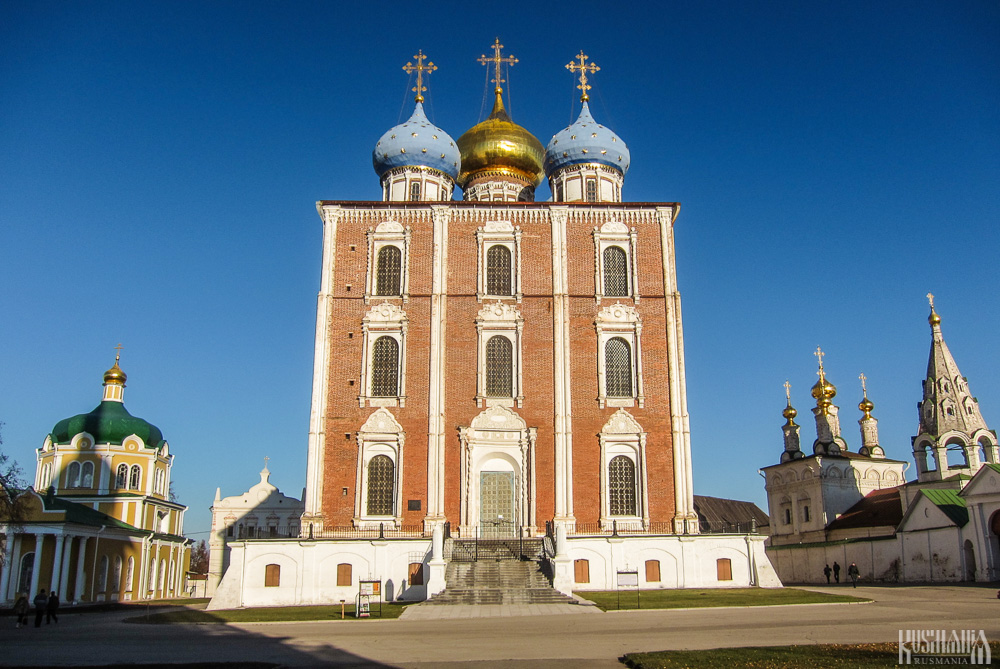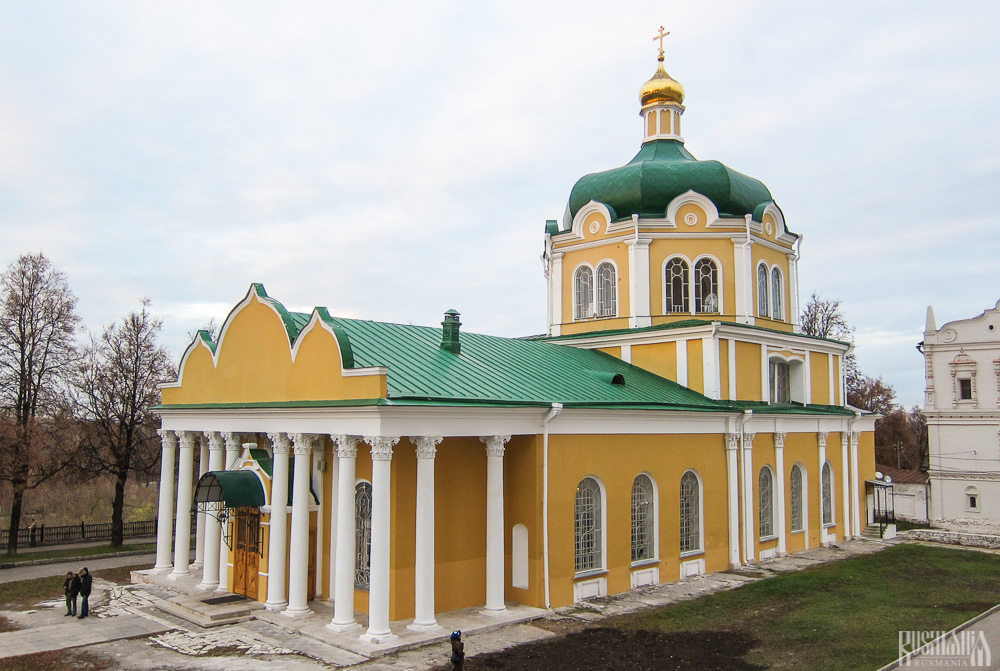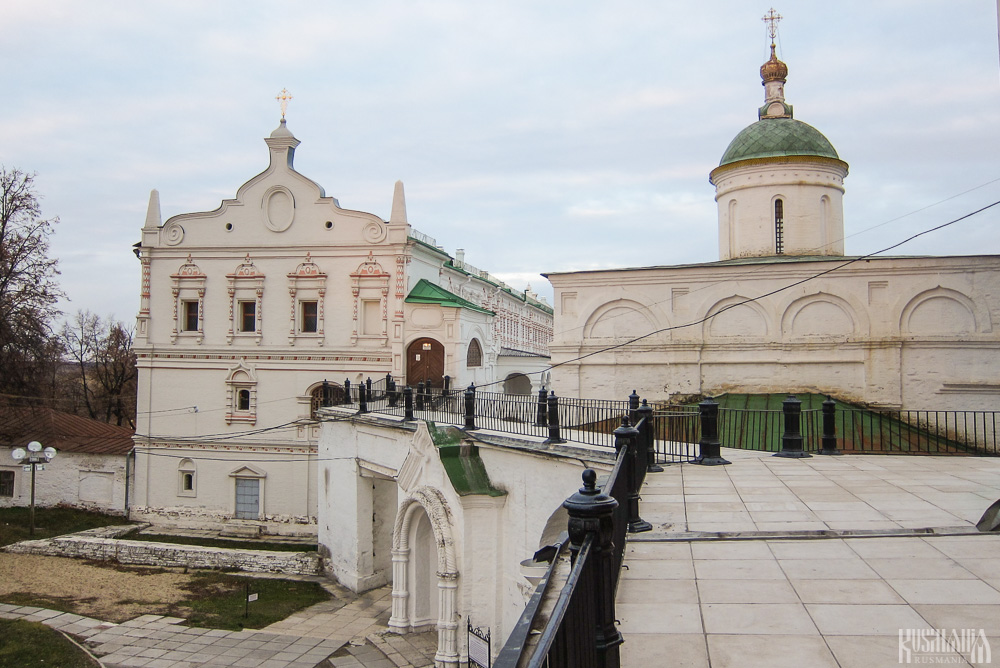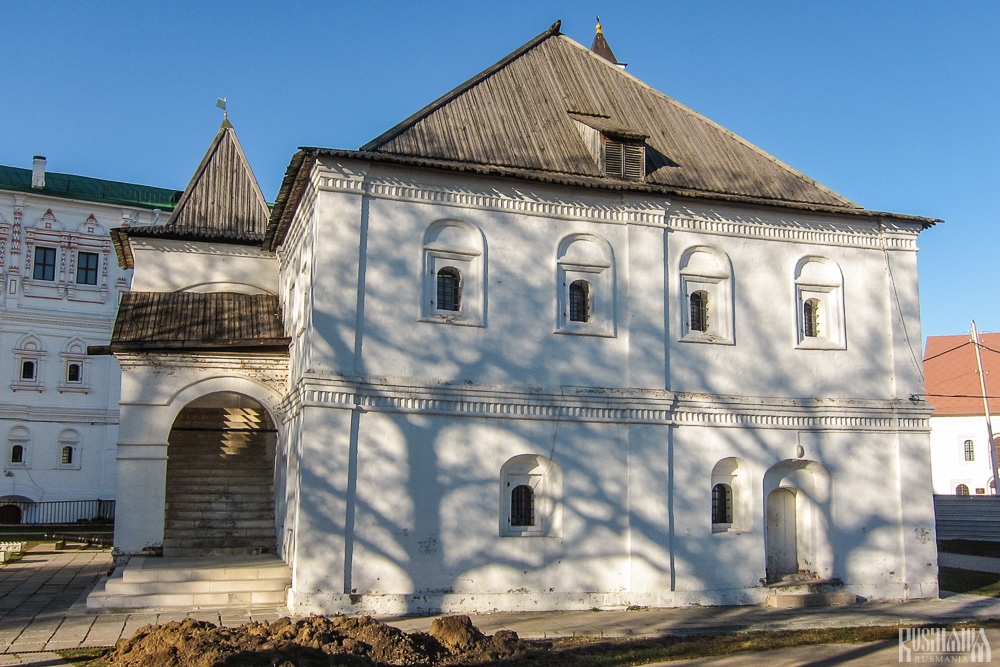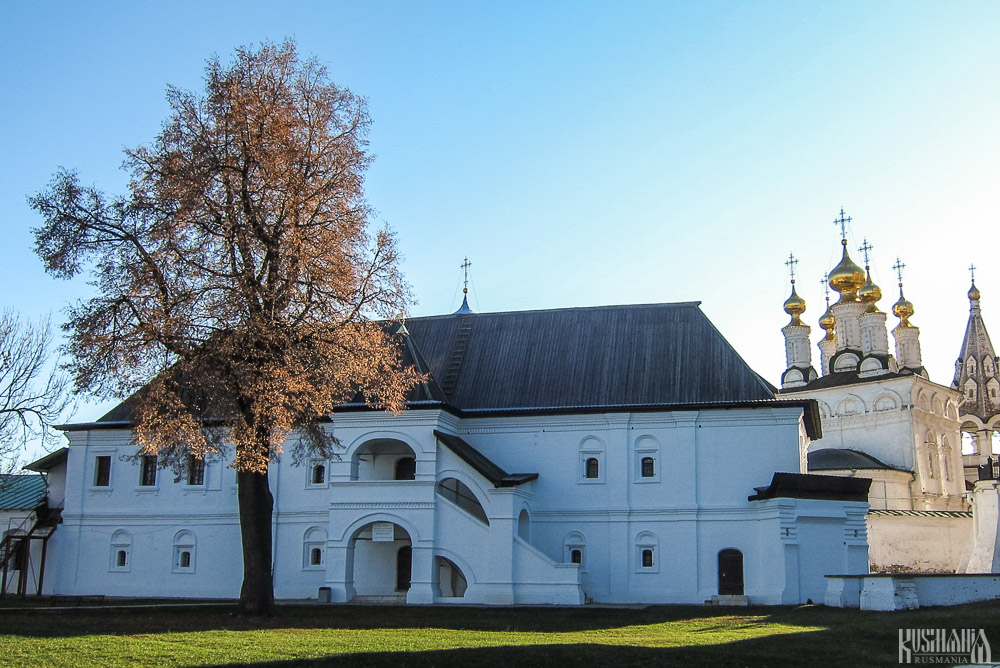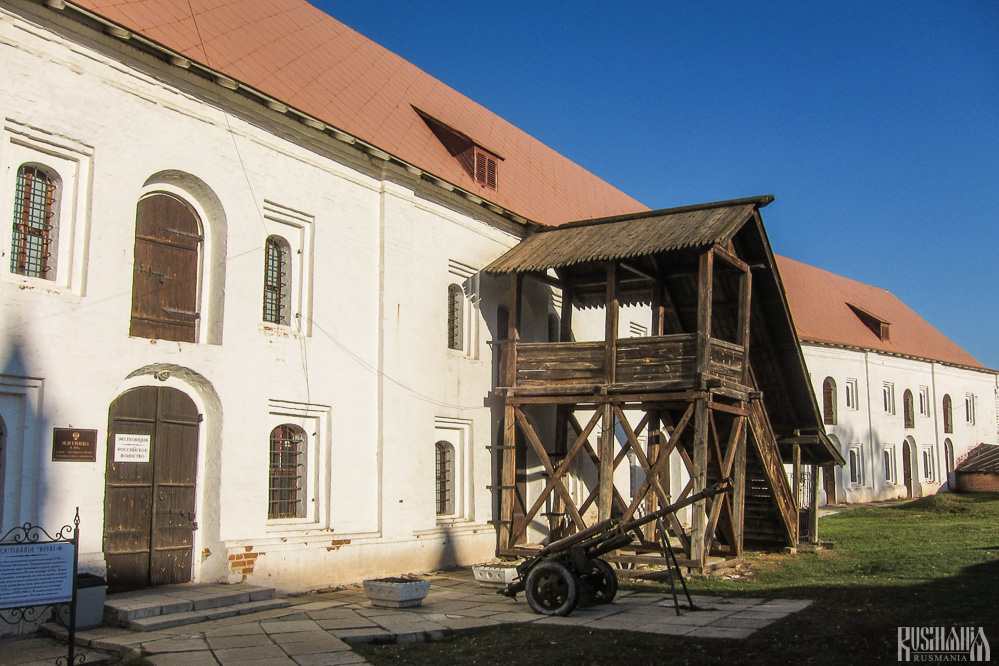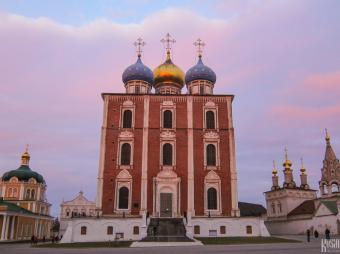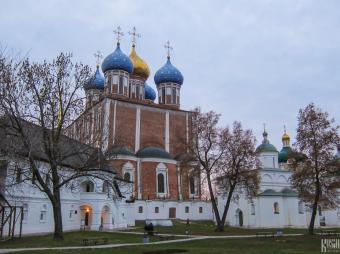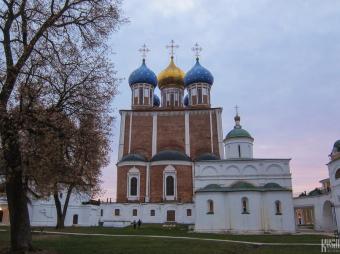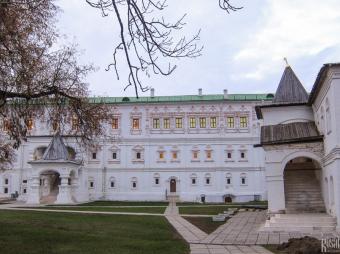Around Sobornaya Ploschad
Ryazan Kremlin

It is believed that fortifications have existed where the Ryazan Kremlin now stands since the end of the 11th century. After the sack of the original Ryazan during the Mongol-Tatar Invasion the grand princes of Ryazan moved their residence here. In the 13th century an earthen mound was created 290 metres in length and on top of this wooden walls and towers were built. Finally a deep moat was dug around the whole complex and filled with water. Today the walls no longer remain and its moat is no longer filled with water, but inside its beautiful buildings, many dating from the 16th-century, still stand. Today the kremlin is the location of the Ryazan Historical and Architectural Museum-Reserve which has several permanent expositions and temporary exhibitions inside the kremlin's various historical buildings. Since the fall of the Soviet Union, the kremlin's cathedrals and churches have gradually been returned to the Russian Orthodox Church.
Bell Tower

Standing at the main entrance to the kremlin is a four-tier bell tower. It is one of the tallest bell towers in Russia standing at 86 metres tall, including a 25 metre gold-coated spire. It is built in the classical style and took several architects just over 50 years to compete, finally being opened in 1840. The bell tower was confiscated from the Russian Orthodox Church in the Soviet era and was only returned in 2007.
Dormition Cathedral
Ryazan's most famous site is probably the magnificent Dormition Cathedral. It was built between 1693 and 1699 by the architect Yakov Bukhvostov in the Naryshkin baroque style. In form it consists of a tall red brick structure decorated with carved white stone window frames and topped with five central domes. Inside the cathedral has a towering iconostasis 27 metres in height which includes two miracle-working icons: the Our Lady of Murom Icon which dates from the 12th century and the Our Lady of Feodotievo which was discovered in the nearby village of Fedotievo in 1487. The cathedral is now the Summer Eparchial Cathedral of the Ryazan and Mikhailov Eparchy. It is only open in the summer.
Nativity of Christ Cathedral
Although you probably wouldn't guess it from its outer appearance, the Nativity of Christ Cathedral is actually the oldest building in the kremlin dating from the early 15th century. It has been redeveloped and added to throughout the years creating its eclectic appearance involving both baroque and classical styles. Inside it holds the remains of several grand princes of Ryazan and the relics of St Basil (Vasili) of Ryazan. Before the construction of the present Dormition Cathedral, this cathedral was known as the Dormition Cathedral. The cathedral is now the Winter Eparchial Cathedral of the Ryazan and Mikhailov Eparchy.
Archangel Michael's Cathedral
The simple white-stone Archangel Michael's Cathedral dates from the 1470s and served as a burial vault of Ryazan archbishops. The cathedral is simple in form with a four-pillar structure topped by a single dome with three apses. Over its long history it has been damaged by several fires. In the mid-18th century it was noted how it had fallen into disrepair and was only restored in the early 19th century. Having previously been closed and used as a museum in the Soviet period, in 2011 the cathedral was returned to the Russian Orthodox Church.
Oleg's Palace ('From Rus to Russia' Exposition)
Oleg's Palace is the largest civilian building within the kremlin. It stands where the grand princes of Ryazan once had their palace. The first two storeys were built in the mid-17th century and its third floor was added at the end of the century. It is named after Oleg Ivanovich, the most famous grand prince of Ryazan, whose image once decorated the building's façade. The palace is now used by the museum-reserve to hold the exhibition entitled 'From Rus to Russia' which details the formation of modern-day Russia from semi-independent principalities. This exhibit is closed on Mondays, Tuesdays and the last Wednesday of the month.
Pevchesky Quarters ('Customs of our Grandfathers' Exposition)
The Pevchesky Quarters date from the mid-17th century and gets its name from the word 'pevchy' meaning singing, as the choir used to rehearse here even though the main purpose of the building was to accommodate the archbishop's finance department. The building now houses the exposition entitled 'Customs of our Grandfathers' which details the life of the people of central Russia from the 17th to 19th century. This exhibit is closed on Mondays, Wednesdays and the last Thursday of the month.
Konsistorsky Quarters ('People and Nature' and 'Before Our Era' Exhibitions)
The Konsistorsky Quarters is a pretty two-storey building which dates from the mid-17th century and in one place the original frescoes have partially been persevered. It holds two exhibitions. The first is entitled 'Before Our Era' and concerns the stone age and displays items found in archaeological digs. The second exhibition is called 'People and Nature' which shows the flora and fauna found in the neighbouring lands especially the nearby Oksky State Biosphere Nature Reserve. This exhibit is closed on Mondays, Fridays and the last Thursday of the month.
Commoner Guesthouse ('The Russian Military' Exposition)
As its name suggests the Commoner Guesthouse was a guesthouse for peasants and other low ranks of people. However the two-storey building was originally built at the end of the 17th century as a granary. Now the guesthouse is used by the museum to accommodate an exposition dedicated to the role of the Russian Army in the country's history from the troops of the great princes to the army of the 20th century. This exhibit is closed on Mondays, Thursdays and the last Friday of the month.
Holy Spirit Church
The Holy Spirit Church dates from 1642 and is a rare example of a double tent dome church. The domes stand on the main structure which is decorated with two apses and kokoshniks. To this a vestibule was added in in the end of the 18th century and then a three-tier tent-domed bell tower in 1864. It is the last remaining church within the kremlin that is still owned by the museum-reserve, holding its scientific library.
| Location | Ulitsa Naberezhnaya Trubezhnaya |
|---|---|
| Website | http://ryazankreml.ru |
| Tickets | There is no charge to enter the kremlin's territory |
| Clock | All exhibitions work from 10:00 - 18:00 and are closed on Monday plus other specific days. |

 History
History
